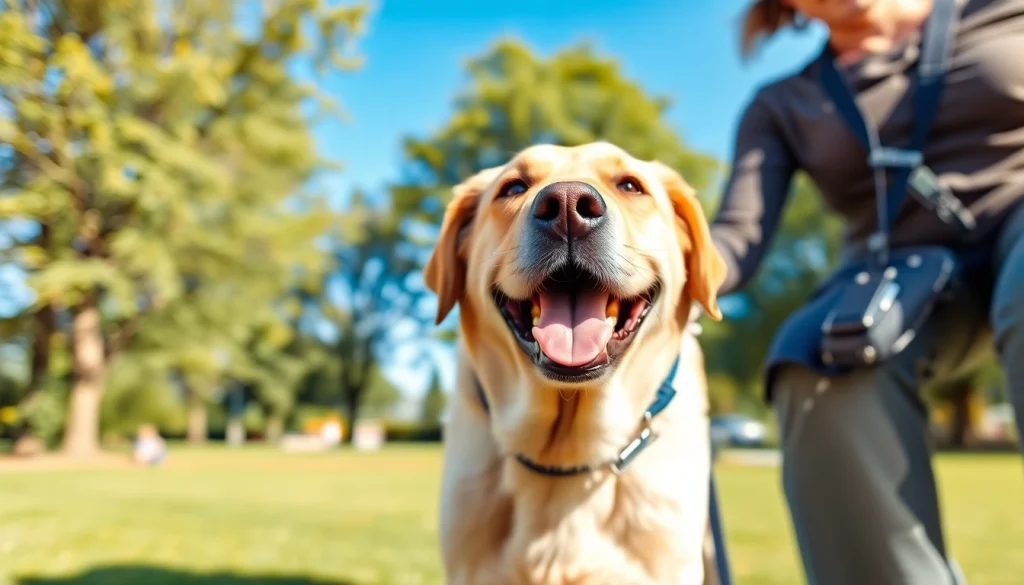Why You Should Consider to Buy a Service Dog for Enhanced Independence

Understanding Service Dogs and Their Benefits
What Is a Service Dog?
A service dog is specifically trained to perform tasks that assist individuals with disabilities. These tasks can include guiding a person who is visually impaired, alerting someone with hearing loss to important sounds, providing stability for individuals with mobility impairments, and even providing emotional support for those with psychiatric conditions. Service dogs are essential companions that enhance the quality of life for their handlers by allowing them to operate more independently.
Types of Service Dogs
There are various types of service dogs, each trained to support specific disabilities. The most common categories include:
- Guide Dogs: Trained to assist individuals who are blind or have low vision by navigating obstacles and providing safety while walking.
- Hearing Dogs: Alert their owners to important sounds such as doorbells, alarms, or the cries of babies.
- Mobility Assistance Dogs: Help individuals with physical disabilities by fetching items, opening doors, or providing support while walking.
- Medical Alert Dogs: Trained to detect medical conditions like seizures or low blood sugar and alert their owners or caregivers.
- Psychiatric Service Dogs: Assist people with mental health conditions, providing calming support and interruption of harmful behaviors.
Benefits of Having a Service Dog
The benefits of having a service dog extend beyond mere companionship. Some notable advantages include:
- Increased Independence: Service dogs enable individuals to perform daily tasks without the constant assistance of others, enhancing their independence.
- Emotional Support: Many handlers report a significant reduction in anxiety and depression, as service dogs provide unwavering companionship and comfort.
- Enhanced Safety: Service dogs alert handlers to potential dangers, helping them navigate through public spaces with assurance.
- Improved Social Interaction: Having a service dog often opens opportunities for social engagement, allowing handlers to connect with others who are curious or supportive.
How to Buy a Service Dog: A Step-by-Step Guide
Researching Qualified Service Dog Providers
Before deciding to buy a service dog, it’s crucial to conduct thorough research on potential providers. Look for organizations that are accredited by reputable associations, such as Assistance Dogs International. These organizations typically have strict training and placement protocols and can provide well-trained service dogs that meet your specific needs. Be sure to check their reviews and testimonials to gauge their success rates and customer satisfaction.
Understanding the Costs Involved
The cost of acquiring a service dog can vary significantly based on various factors, including the type of service dog, training level, and provider. Generally, expect to pay anywhere from $15,000 to $30,000 for a service dog. This fee often covers training, medical evaluations, and ongoing support. Some organizations may offer payment plans or financial assistance; therefore, it’s important to inquire about such options before making a decision.
Preparing for the Application Process
The application process for obtaining a service dog can take time. Be prepared to provide documentation of your disability and how a service dog would assist you. Additionally, many organizations require an interview process, often involving the assessment of your living situation to ensure a conducive environment for a service dog. Have supporting documents, such as recommendations from healthcare providers, ready to streamline this process.
Legal Considerations When You Buy a Service Dog
ADA and Service Dog Definition
The Americans with Disabilities Act (ADA) outlines specific guidelines for service dogs, defining them as dogs that are individually trained to perform tasks for individuals with disabilities. It’s essential to understand that emotional support animals, therapy dogs, and other types of assistance animals do not fall under the same legal category as service dogs. This distinction is vital for knowing your rights and the public’s obligations toward service animals.
Rights of Service Dog Handlers
As a service dog handler, you have specific rights protected under the ADA. You are entitled to bring your service dog into any public space where dogs are ordinarily allowed, which includes restaurants, shopping malls, and public transportation. However, you must ensure that your service dog is well-behaved and does not disrupt others. Be prepared to answer limited questions about your service dog, such as whether it is required because of a disability and what tasks it has been trained to perform.
Documentation and Identification Requirements
While the ADA does not require service dogs to wear vests or carry identification, having documentation from your provider can be beneficial for smoother interactions in public settings. Some handlers opt to invest in service dog vests which display the dog’s working status, easing concerns from the general public about the dog’s behavior and role. Keep in mind that documentation is primarily for personal assurance and ease of access to public places.
Training and Socialization for Your Service Dog
Essential Training Techniques
Training a service dog is a meticulous process that ensures that the dog can perform specific tasks reliably. Essential training techniques include:
- Positive Reinforcement: Using treats and praise to encourage desired behaviors helps the dog learn effectively.
- Task-Specific Training: Training should focus on the specific tasks that the dog will need to perform to assist their handler.
- Desensitization: Exposing the dog to various environments and stimuli helps prevent overreacting in public settings, ensuring that the dog can handle distractions.
Socialization with Different Environments
Socialization is crucial for any service dog. Introduce your dog to different environments, such as busy streets, crowded places, and various public facilities. The goal is to ensure that the dog remains calm, confident, and responsive when in different settings. Engaging with diverse groups of people and other animals will also enhance the dog’s ability to navigate the complexities of daily life with their handler.
Continuous Training and Support Resources
Training doesn’t stop once you take your service dog home. Continuous education and practice are essential for maintaining the dog’s skills. Consider participating in additional training sessions or workshops that focus on advanced skills or problem-solving. Furthermore, online communities and resources can provide support and advice on handling challenges that may arise during the partnership between you and your service dog.
Frequently Asked Questions About Buying a Service Dog
Can Anyone Buy a Service Dog?
The short answer is no; not everyone can buy a service dog. To qualify for a service dog, individuals must have a recognized disability as defined by the ADA. This typically includes physical, sensory, psychiatric, or developmental disabilities that substantially limit one or more major life activities. A thorough assessment by a healthcare professional is often required.
What to Look for When Buying a Service Dog?
When considering the purchase of a service dog, it is essential to evaluate the following factors:
- Training Quality: Ensure the dog has been trained in accordance with ADA standards and that the trainer has a good reputation.
- Temperament: The service dog’s personality should match your needs—some may require a calm and gentle dog, while others may benefit from a more energetic breed.
- Support and Resources: Look for providers that offer continued support and training after the placement of the service dog.
How to Find Financial Assistance for Buying a Service Dog?
Financial assistance for obtaining a service dog can come from various sources. Start by exploring non-profit organizations that specialize in service dogs; some may offer free dogs and training. Additionally, look into grants, crowdfunding, and community assistance programs. Some individuals have found success in applying for disability benefits that can cover part of the costs associated with acquiring and caring for a service dog.







